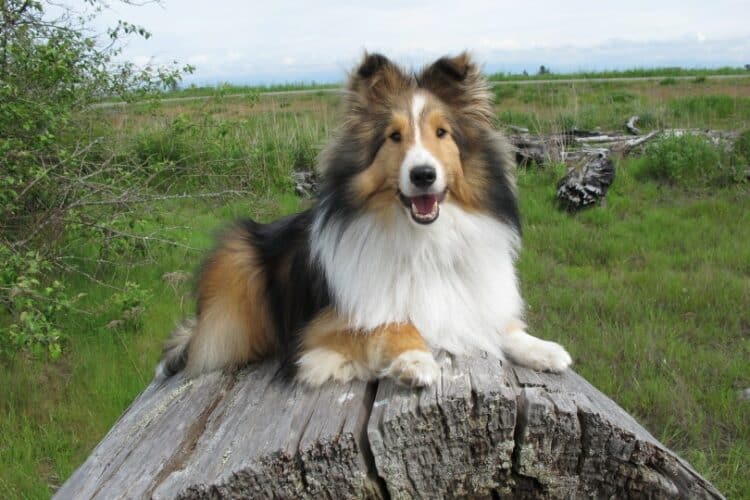Shetland sheepdogs are a cousin breed of the border collie and share many of their most striking characteristics. The most recognizable of which is their long, thick coat. While beautiful, that coat causes a lot of shedding. You may be thinking, “Well, that’s fine! I’ll take them to the groomers!”
Regular trips to the groomers and daily brushing can help reduce the shedding you see in your home. However, dogs that shed a large amount of fur also shed a large amount of dander, which triggers pet allergies. Unfortunately, the Shetland sheepdog is not hypoallergenic.
The “Sheltie” was initially bred as a working dog in the remote islands of northern Scotland. Their thick coat helped protect them from the harsh winters. However, this excess fur sheds quite a bit throughout the year. You’ll see considerably more during the spring shedding season, which can affect allergy symptoms.
Understanding Your Allergy Symptoms
It’s usually pretty easy to diagnose a pet allergy. If you experience itchy, red, or watery eyes along with a runny nose or congestion while you’re around dogs or cats, it may be safe to assume that pets are the cause. However, it’s always a good idea to see your doctor for confirmation.
Your doctor or an allergy specialist may suggest a skin or blood test to confirm the source of your symptoms. The results may confirm what you already suspect, but they may also provide insight into other irritants contributing to them.
An allergy is your body’s overreaction to something in your environment that is usually harmless. Your body perceives it as dangerous and activates your immune system to combat that threat. Humans can react to many things, including pets, pollen, molds, medications, foods, and more.
A Guide to Shedding, Dander, Saliva, and Pollen
For those with pet allergies, symptoms are triggered when they are exposed to proteins created by pets. These proteins can be found in dander, the dry skin cells accompanied by shedding, and in their saliva, urine, and feces.
Dogs shed skin cells as a normal process of keeping their skin and coat healthy. While the hair does not cause allergies, the dander that comes with it does. A dog that sheds more will create more dander and be much more likely to trigger allergy symptoms.
When your pet grooms themselves, saliva residue is left behind on their fur can become an airborne irritant when they shed. They can also pick up pollen when outside, especially if they roll around in the grass, and bring it into your home.

Minimizing Pet Allergies at Home
We would not typically recommend a Shetland sheepdog for someone with pet allergies due to their level of shedding. However, if you already have a Sheltie and are experiencing allergy symptoms, there are a few things you can try to help minimize your symptoms before you consider re-homing your beloved fur-baby.
- Don’t let your pup in the bedroom: You spend a lot of time in your bedroom, and by making it a haven from their shedding, you may be able to give your body a break from the allergens.
- Steam clean or remove carpeting: If possible, replace carpets with hard floors like wood or tile. Carpet fibers trap dander, and steam cleaning can only do so much, but it can help quite a bit.
- Have others help with the chores: Dusting and vacuuming can remove dander and send it flying into the air. If there’s no one else available to help, wear a filtered and well-fitting mask.
- Change your HVAC filters: If it’s been a while since you’ve changed them, consider doing so now. High-quality HEPA filters can trap up to 99% of fine air contaminants like dander.
- Take them to the groomers often: Your groomer has a de-shedding process where they can remove much more of their loose undercoat than you can at home with brushing.
- Daily brushing: Brush your pet outside and try to catch the hair so it can be thrown out. Use a pin brush that can reach through the thick coat to the skin and remove the loose fur before it ends up inside your home.
Final Thoughts
While the adorable and highly intelligent Sheltie makes for a fantastic family pet, it may not be the best choice for a home with allergy sufferers. No dog is truly hypoallergenic because all dogs will produce dander as they shed dead skin cells, just like humans. However, there are alternative dog breeds that don’t shed that may be more suitable.
Featured image courtesy of Shutterstock














